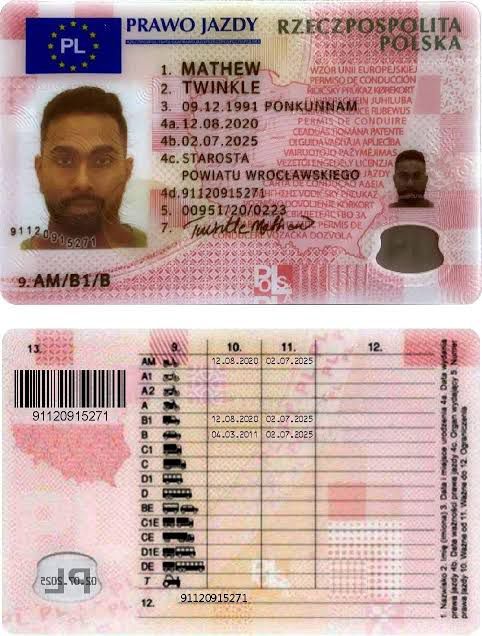What Is Driving Licenses B And How To Utilize What Is Driving Licenses B And How To Use
Understanding Driving Licenses: Types, Requirements, and Frequently Asked Questions
Driving is a basic element of contemporary life, and acquiring a driving license is an important turning point for lots of people. This short article checks out the different types of driving licenses readily available, the requirements to get them, and answers typically asked concerns connected to the subject. A knowledgeable point of view on driving licenses can assist people understand the value of picking the appropriate kind of license to meet their requirements.
Kinds Of Driving Licenses
Driving licenses can vary in between countries and regions, but they usually fall into a number of major categories. The following table summarizes the most typical kinds of driving licenses, including their functions and typical constraints.
Kind of License
Description
Typical Restrictions
Eligibility Age
Student's Permit
Permits novice motorists to practice.
Should drive with a certified grownup.
16-18 years of ages
Class C License
Requirement license for passenger lorries.
No restriction on number of passengers.
18 years or older
Class A License
Business license for large vehicles.
Need to follow stricter policies.
21 years or older
Class B License
For driving buses and larger lorries.
May need unique recommendations.
21 years or older
Bike License
For running motorcycles.
Must wear a helmet; differs by state.
16-18 years old
International License
Allows legal driving in foreign nations.
Should possess a valid domestic license.
18 years or older
Learner's Permit
The student's license is the initial step for numerous individuals venturing into the world of driving. This license enables beginner drivers to practice driving under monitored conditions, usually requiring a licensed grownup over a particular age to accompany them in the vehicle.
Class C License
The Class C license is the most commonly held driving license, enabling individuals to run standard guest cars. This license typically has actually less restrictions compared to other categories.
Class A and B Licenses
Class A and B licenses are essential for running industrial automobiles. kupować prawo jazdy szybko i łatwo need special training and testing, ensuring that motorists are geared up with the abilities needed for navigating larger and more complicated automobiles safely.
Motorbike License
Individuals interested in riding motorcycles should obtain a motorbike license, which can require extra training and screening. Safety gear, such as helmets, is frequently mandated by law.
International License
An international driving license enables people to drive in foreign countries, but it is essential to have a legitimate domestic driving license in conjunction with the worldwide authorization.
Requirements to Obtain a Driving License
The requirements for getting a driving license can differ significantly by jurisdiction. Nevertheless, there prevail steps and requirements that a lot of candidates will encounter. Below is a list of general requirements:
Age Requirement:
- Minimum age differs; student's authorizations are often issued at 16, while complete licenses might require candidates to be 18 or older.
Vision Test:
- Most jurisdictions require candidates to pass a vision test to guarantee safe driving capabilities.
Written Test:
- New motorists need to pass a written exam that covers traffic laws, roadway signs, and safe driving practices.
Driving Test:
- Practical driving tests are conducted to show a candidate's capability to run an automobile securely under various conditions.
Fees:
- Payment of application and screening charges is typically needed.
Proof of Identity:
- Applicants need to offer valid recognition, such as a passport or birth certificate, along with evidence of residency.
Parental Consent (for minors):
- Parental or guardian authorization is frequently required for candidates under the age of 18.
Understanding the different types of driving licenses and their associated requirements is crucial for anybody looking to drive legally and securely. Each license serves an unique purpose, dealing with different driving requirements, from standard vehicles to industrial transport and motorbikes. By satisfying the necessary criteria and adhering to policies, aspiring motorists can take pleasure in the liberty of driving while guaranteeing their safety and the security of others.
Regularly Asked Questions (FAQs)
What do I need to bring when using for a driving license?
- You typically need to provide recognition, evidence of residency, and any necessary application charges. Talk to your local DMV or licensing authority for particular requirements.
For how long does it require to acquire a driving license?
- The timeline can differ based on individual situations, such as how rapidly one can finish the needed tests, and whether there is a stockpile at the licensing authority.
Can I drive with a student's permit?
- Yes, however you should be accompanied by a licensed motorist and abide by limitations set by your regional laws.
What happens if I stop working the driving test?
- You usually have the alternative to retake the test after a designated waiting period, which differs by jurisdiction.
Is it needed to take a driving course?
- While not always obligatory, taking a chauffeur's education course can be advantageous and is often required for individuals seeking a student's authorization.
By being notified about the kinds of licenses available, the requirements necessary for obtaining one, and the associated guidelines, potential motorists can navigate the procedure of acquiring a driving license with confidence.
